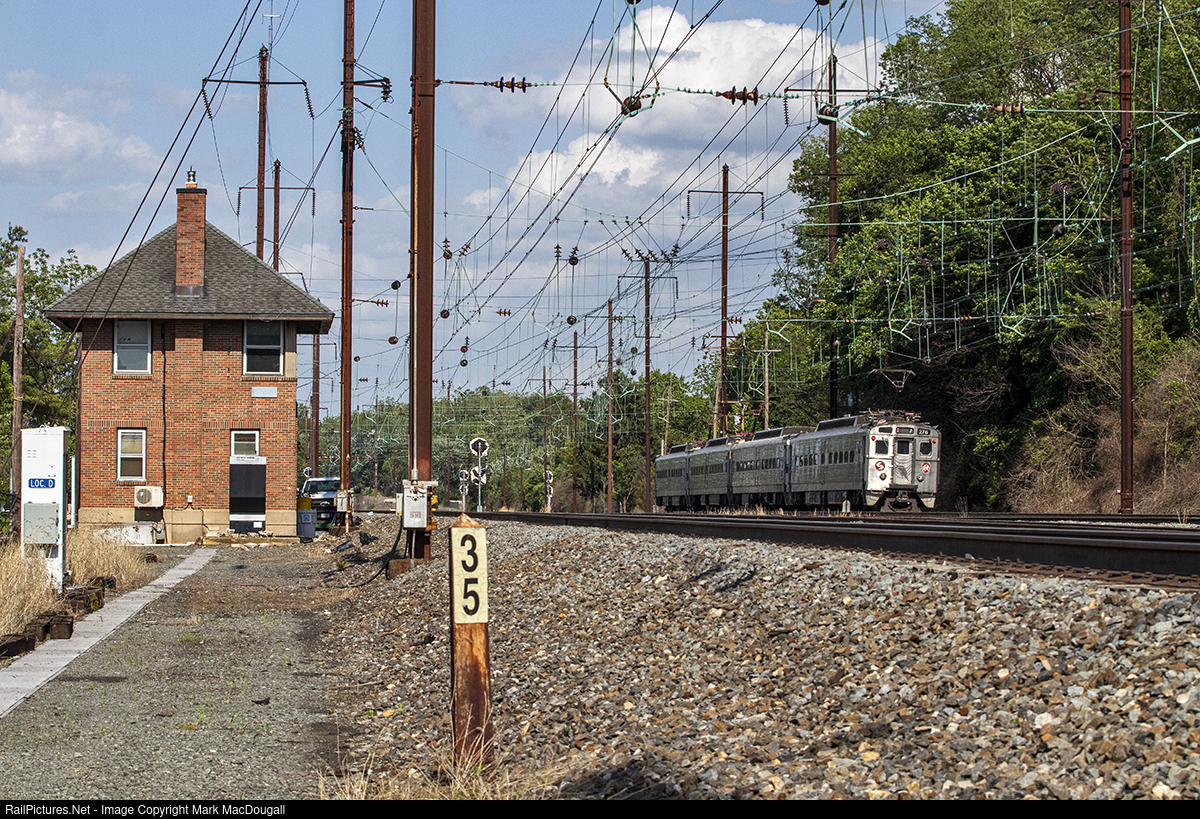A little while ago I mentioned NORAC Rule 280b Approach Normal, a signal indication that has been effectively extinct in the wild for over two decades. However we will look at another marker type signal indication that used to be fairly widespread, but as far as I can tell, has now been reduced in the United States to just a pair of locations on the former PRR Main Line. Of course I am referring to the limited speed triangle.

Introduced sometime around the 1940's, the bright yellow Limited Speed Triangle was deployed on speed signaled railroads in conjunction with the introduction of the #20, Limited Speed turnout. For the uninitiated this translates to speeds of about 40-45mph. Prior to this speed signaled railroads tended to have a main line Normal (Maximum Authorized) speed of 50-70mph, a Medium (aka Reduced) speed of 30mph and a Slow speed of 15mph. The system worked from both a track engineering standpoint given the speeds involved and logical standpoint in terms of full speed, half speed and quarter speed. As equipment improved throughout the 1920's and 30's, the gap between the maximum speed trains could regularly achieve and the 30mph Medium Speed began to grow. Because its easier to decrease running time by not going slow as opposed to just going fast, a number of Eastern railroads invented both faster turnouts and the concept of Limited speed.
 |
#20 Limited Speed turnout at BRYN MAWR interlocking.
|
Just like in the 1980's when High Speed 60 and 80mph turnouts were invented, railroads suddenly had to fit the round peg of a new speed into the square hole of their existing signaling system. In a time when flashing signal relays were generally shunned as unreliable the solution was the Limited Speed Triangle. The black bordered yellow triangle would upgrade Approach Medium and Medium Clear indications to Approach Limited and Limited Clear. In cases where a #15 turnout was being replaced by a #20, the signaling change would involve change to interlocking wiring or logic.
Although some railroads including the
Reading, did invent new non-flashing limited speed color light signal like Y/G/G or R/G/G, limited speed triangles were embraced by the PRR,
B&O,
L&N,
ACL/SAL and
Southern. They also appeared in Canada with the addition of the letter L inside the triangle. Of course one of the biggest users of the triangles was the PRR, which would employ them at select junctions and along its 4 track main lines that features frequent non-reverse running crossover movements. More specifically the PRR deployed limited speed upgrades (and triangles) to places where its 4-track lines would shift orientation from ⏬⏬⏫⏫ to ⏬⏫⏬⏫ and also as part of its general World War 2 era NEC re-signaling effort.
 |
DV Interlocking with a mix of Limited and Slow speed diverging routes.
|
Starting in the 1950s flashing signals became more accepted and the Limited Speed Triangle began its slow decline. The main downsides was the inability to mix Limited and Medium speed routes, the issue of Approach Limited indications proceeding Medium Approach and the reduced visibility of the triangle vs a color light, especially at night. By the dawn of 21st century I was only aware of two remaining installations of limited speed triangles. The first was at COUNTY interlocking on Amtrak's NEC in New Brunswick, NJ with a full set of four triangles at the interlocking itself and the milepost 31 and 34 automatic locations adjacent to it. These were unfortunately replaced in the early 2010's as part of the larger 562 re-signaling effort between COUNTY and FAIR near Trenton.


The other use of limited speed triangles, and the only one still in service today, were the milepost 8 and 11 automatic signal locations adjacent to BRWN MAWR interlocking on the name brand "Main Line" portion of the Amtrak Harrisburg Line. These two signal locations are adjacent to the Ardmore and Villanova stations respectively and easily photographed. The reason BRWN MAWR itself lacks the triangles is because the tower caught fire in 1994 and the interlocking redone with modern hardware including flashing relays. The two distant locations will certainly keep their triangles until the Main Line between ZOO and PAOLI is slowly re-signaled over the next 10-20 years.


Note I have been invoking the United States instead of North America in terms of the endangered nature of these signals. That is because Canada still retains quite a few of its Limited triangles generally on its western transcontinental routes at the ends of single track passing sidings. Highly ironic that the land that hasn't seen a flashing signal indication it doesn't love, has become the final refuge for a hack intended to avoid flashing signals.

















































